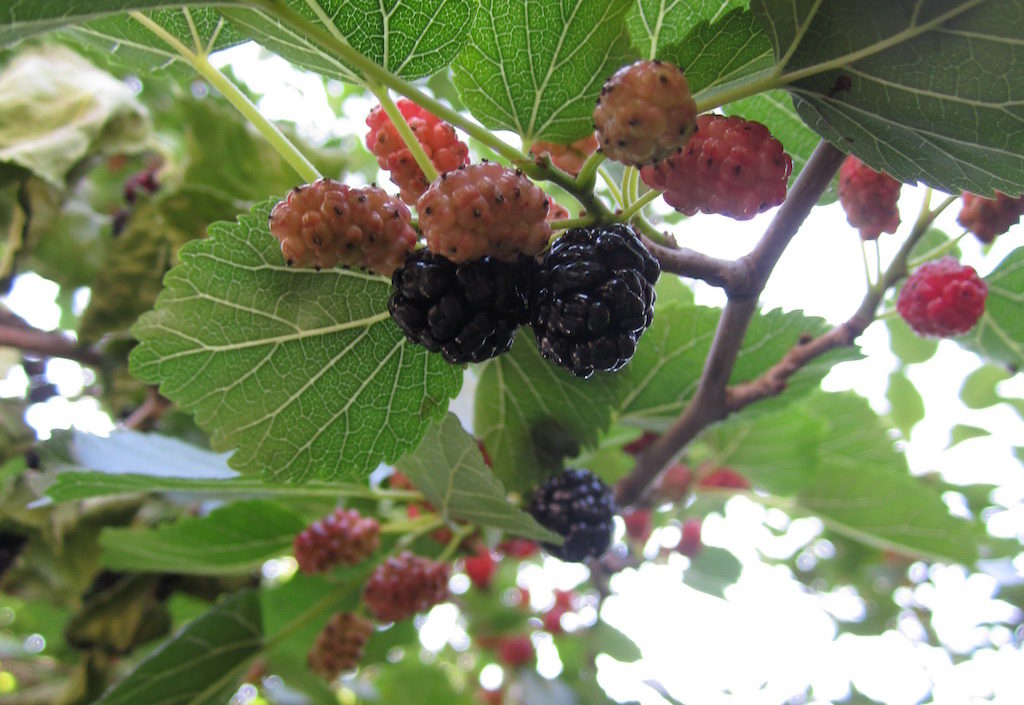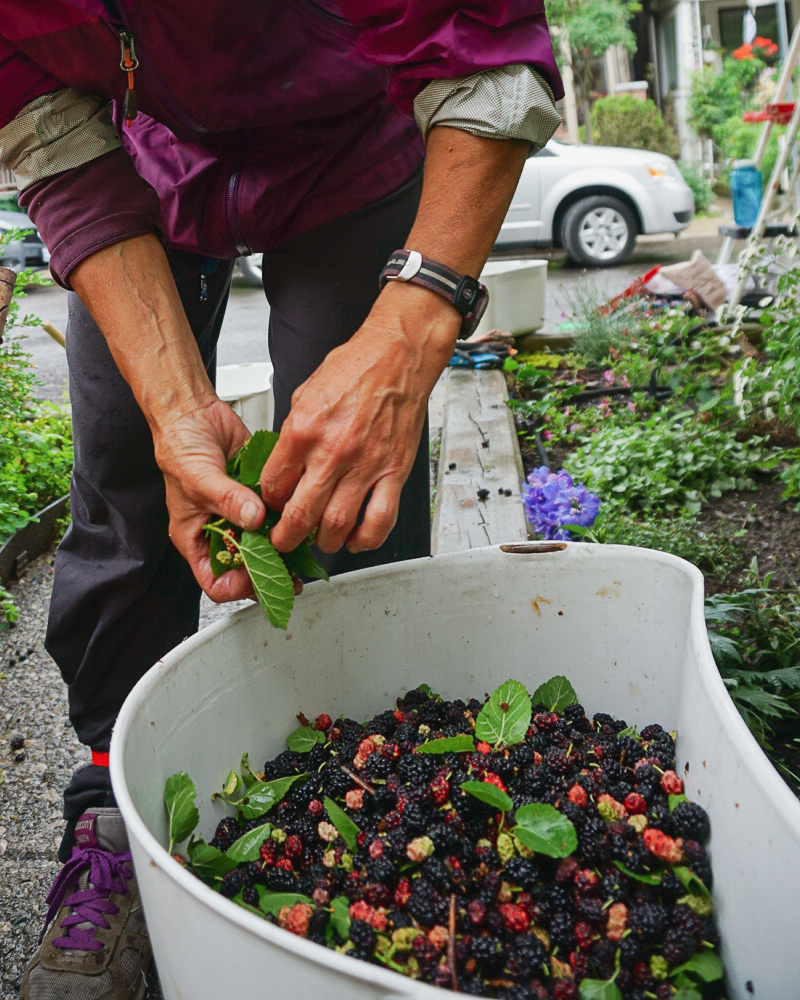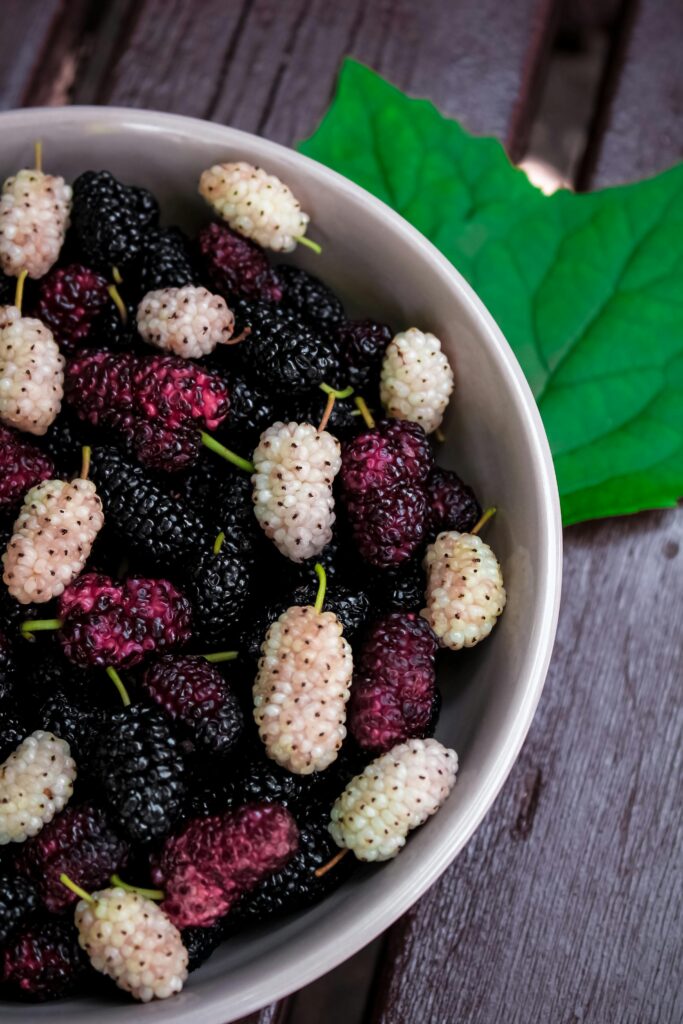Mulberries
Summary
These small berries, similar in size and shape to blackberries, grow on trees up to three storeys high. The colour of mulberries varies, depending on variety; red native mulberry trees have berries that darken as they ripen, turning from white to red to purplish black when ripe; white Asian mulberry trees have berries that are white or golden when ripe. The majority of mulberry trees in Toronto are hybrids of red and white mulberry trees, with purplish black berries, like those of the red mulberry.
Jump To
Average Ripening Timeline: late June to early August

- June
- July
- August

Ripeness Indicators
- Color When Ripe: Red or hybrid mulberries turn a dark purplish black colour when they’re ready to harvest, and white mulberries will be a white or golden colour
- Feel & Texture When Ripe: juicy
- Taste & Smell When Ripe: taste sweet rather than tart
- Underripe if…not sweet
- Overripe if…mushy, wrinkled, or discoloured

How to Harvest
Average Yield: 10 to 100 lbs
- Dress for a juicy mess while picking
- Using poles with hooks at the ends, vibrate (not shake!) branches above a tarp/bed sheet stretched out and held at the corners
- Gather the ripe mulberries and place them in containers
- Don’t layer the berries too high in containers, or they will crush
- Don’t pick underripe berries – they will not ripen later. There is some evidence underripe berries may result in stomach upset or mild hallucinations

How to Store and Eat
Storing
Stems can be left on or picked off
- Fridge: Place the mulberries in the fridge when you get home. Store in a shallow container for up to 2 days. Wash only before eating by submerging in a bowl of water
- Freezer: Wash, let dry, and freeze in a single layer. Transfer to a freezer bag. Best used within 6 months
Ideas for Eating
Eating fresh; baking; jam; smoothies